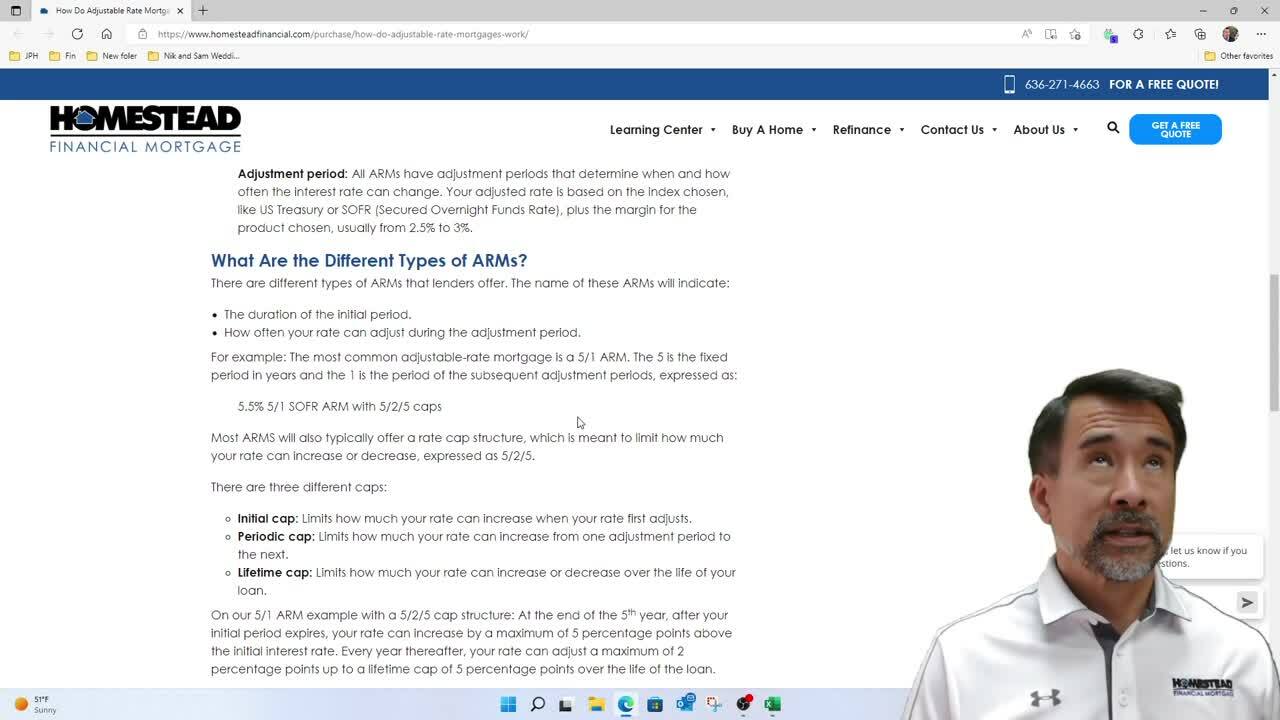
Adjustable-rate mortgages have benefits and drawbacks that you should carefully consider when choosing a home loan. Learn about how ARMs work, the different types of ARMs, when an ARM may be a good option, and when to think about refinancing to a fixed-rate mortgage.
How Do ARMs Work?
An adjustable-rate mortgage (ARM) is a loan with an interest rate that is not fixed throughout the life of the mortgage. Over time, your monthly payments may go up or down as a consequence of rate changes.
Alternately a fixed-rate mortgage (FRM), has a fixed interest rate that is set when you take out the loan and does not change. With this type of loan, your monthly payments will not change.
ARMs have two distinct periods: Fixed period and adjustment period.
Initial period: During this time, the interest rate on your loan doesn’t change. The initial period can range from six months to 10 years. Commonly, we see ARM terms with an initial period of 5, 7, or 10 years.
After the initial period, the rate on your ARM will adjust.
Adjustment period: All ARMs have adjustment periods that determine when and how often the interest rate can change. Your adjusted rate is based on the index chosen, like US Treasury or SOFR (Secured Overnight Funds Rate), plus the margin for the product chosen, usually from 2.5% to 3%.
What Are the Different Types of ARMs?
There are different types of ARMs that lenders offer. The name of these ARMs will indicate:
- The duration of the initial period.
- How often your rate can adjust during the adjustment period.
For example: The most common adjustable-rate mortgage is a 5/1 ARM. The 5 is the fixed period in years and the 1 is the period of the subsequent adjustment periods, expressed as:
5.5% 5/1 SOFR ARM with 5/2/5 caps
Most ARMS will also typically offer a rate cap structure, which is meant to limit how much your rate can increase or decrease, expressed as 5/2/5.
There are three different caps:
-
- Initial cap: Limits how much your rate can increase when your rate first adjusts.
- Periodic cap: Limits how much your rate can increase from one adjustment period to the next.
- Lifetime cap: Limits how much your rate can increase or decrease over the life of your loan.
On our 5/1 ARM example with a 5/2/5 cap structure: At the end of the 5th year, after your initial period expires, your rate can increase by a maximum of 5 percentage points above the initial interest rate. Every year thereafter, your rate can adjust a maximum of 2 percentage points up to a lifetime cap of 5 percentage points over the life of the loan.
So, with a starting rate of 5.5%, your mortgage rate can never adjust to above 10.5%.
When Should You Consider an ARM?
Rates on ARM’s are generally lower, and you can take advantage of those rates during cycles of rising interest rates and wait for rates to come down and refinance to a fixed loan.
Keep in mind that, with an ARM, there is a level of uncertainty of payment shock. Depending on the market, your rate could adjust upward and increase your monthly payments, which may not fit your budget.
Like always, there are different scenarios to compare. Feel free to reach out to our Loan Advisors to learn more about Adjustable-Rate Mortgages.
Take a deeper dive with Homestead Financial Mortgage CEO Jayson Hardie:
